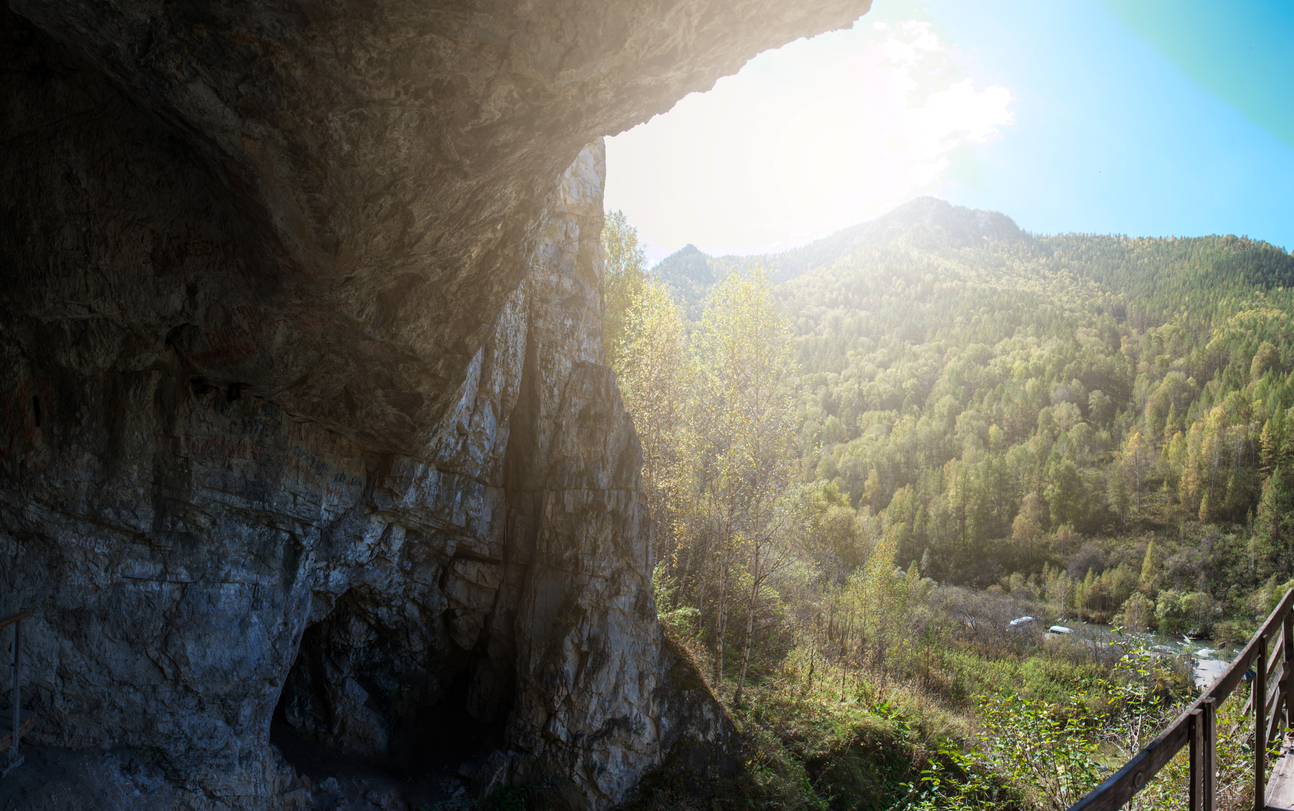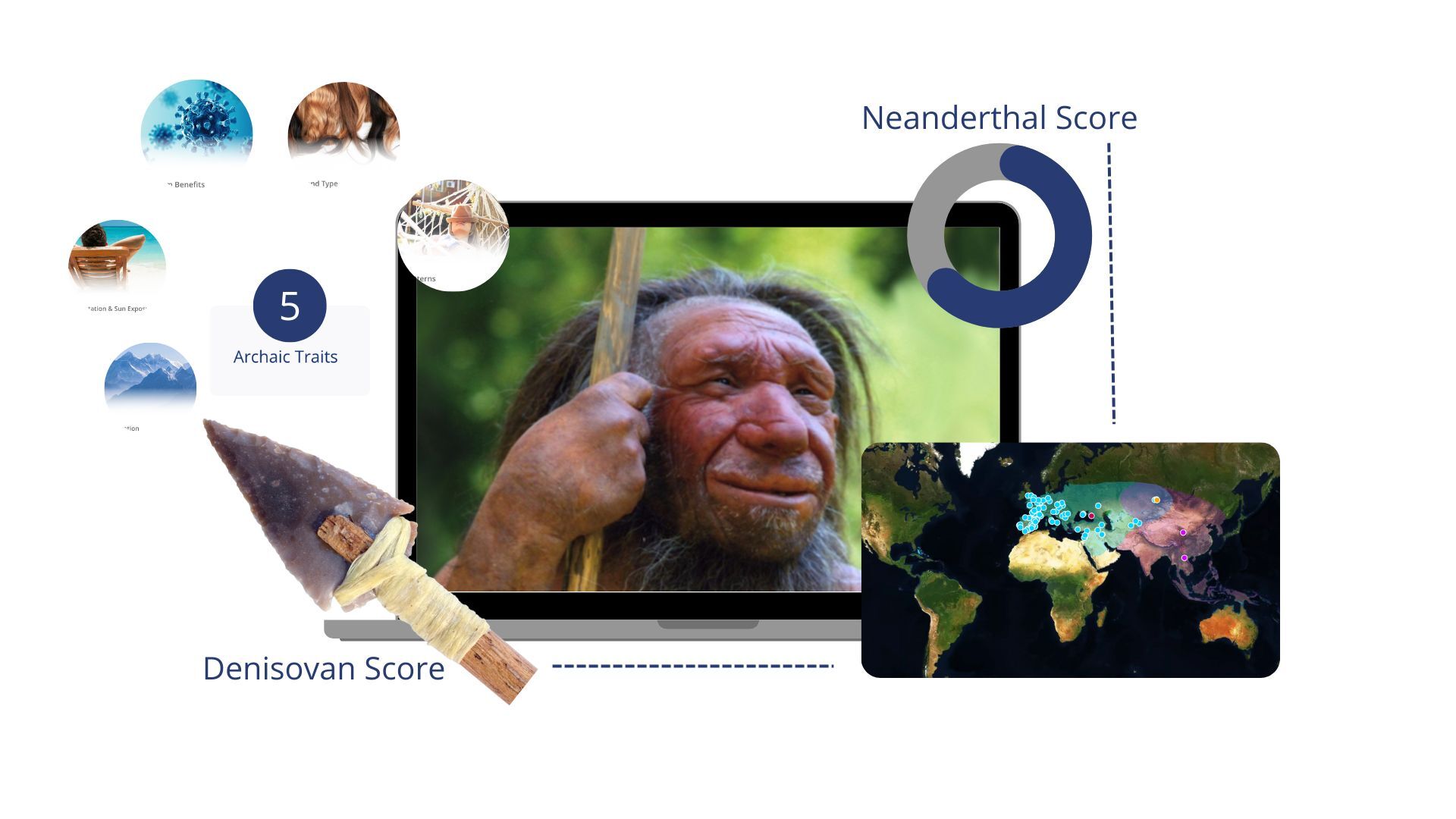Last time, we explored what is known about the Neanderthals, our archaic human cousins. Today, let’s learn more about another archaic human species, more mysterious than the Neanderthals: the Denisovans.
An enigmatic ancient hominin, archaeologists and geneticists have so far discovered only the scantest trail of tantalising clues about the lives of the Denisovans.
Discovery
In 2008, in a cave named Denisova nestled in the Altai mountains of Siberia, the fragment of a finger bone was discovered. Just a small piece of a single individual, it was sent for DNA testing. The results were extraordinary - the bone belonged to a previously unknown extinct human species, distinct from both Neanderthals and modern humans - something entirely new to science.
The discovery placed the Denisovan branch firmly on the human evolutionary tree.
Since then more remains from the same species have been confirmed, both from Denisova cave and at two other locations.
One of the most groundbreaking aspects of Denisovan research is the information we’ve gleaned from their DNA.
Anatomically modern humans, Neanderthals, and Denisovans all share a common ancestor - we’re not descended from Neanderthals and Denisovans on an evolutionary scale, rather we evolved separately from the same starting point - however, when these early human species encountered each other they did occasionally interbreed.
In fact, we have direct evidence of Neanderthals and Denisovans interbreeding with one another. A bone fragment was found in Denisova cave that was sent for testing. Genetic analysis shows that the owner was a first generation hybrid of a Neanderthal mother and a Denisovan father. Researchers gave her the affectionate nickname “Denny”.
Over the generations, genetic contributions from Neanderthals and Denisovans became part of the gene pool of our own ancient ancestors - the anatomically modern humans.
Today, the legacy of Denisovan DNA is still present in the genetic makeup of modern human populations outside of Africa - primarily in Asia and Oceania, with Melanesians, Aboriginal Australians, and some Southeast Asian populations carrying a higher proportion of Denisovan DNA to others.
Evidence suggests that the Denisovans weren’t confined to that unassuming Siberian cave, and that they were in fact a widespread group. Their remains have been found in 3 locations - in the Denisova cave, on the Tibetan Plateau, and the Annamite Mountains in Laos.

To live in mountainous regions such as the Altai and Annamite mountains, their bodies adapted to tolerate high altitudes. Some of these adaptations have survived to modern humans, such as the gene EPAS1 which has been linked with an improvement in coping with low oxygen levels.
Despite the amount of information we have already learned about them from the remains they left behind, the story of the Denisovans is far from being complete. A great number of questions remain unanswered about them.
We haven’t yet discovered a complete Denisovan skull, so we can’t say for certain what they would have looked like. Some scientists have attempted to predict their appearance based on their DNA, and have even published a proposed reconstruction of a Denisovan face, but whether this is accurate or not is contested.
Using their DNA we can surmise certain things about their bodies. For example, their genes suggest that they would have had a wide pelvis with a large ribcage. Also based on their DNA, geneticists predict that they are likely to have had a low forehead and broad skull.
Very recently, just in 2021, ancient hand and footprints were found in Tibet. They were dated to between 226 and 169 thousand years ago, which is older than the Denisovan remains that were found on the Tibetan plateau, and also older than any evidence we have for anatomically modern humans in the region, so they may have been left by two Denisovan individuals. *
Quite charmingly, some of the impressions show evidence of the fingers and toes being wiggled and squished into the mud. It’s tempting to imagine siblings or friends, delighting in squishing their hands and feet into the mud, much as any child today might do when presented with a sticky puddle.
We don't know exactly when the last Denisovans vanished from the earth, as we have found so few of their remains. One study suggests they may still have been living on New Guinea or the surrounding islands as little as 15,000-30,000 years ago, based on modern indigenous populations in the area showing particularly high levels of Denisovan DNA.
The clues we have discovered so far that help us understand more about our ancient cousins are a reminder that our own story as humans is a captivating tale of intermingling, adaptation, and survival. Our genetic makeup is a rich mosaic of our ancestors, each playing a part in the complex narrative of our species. The Denisovans, with their mysterious physical remains and their enduring genetic influence, are a remarkable addition to this story, reminding us that our history is a web of connections that stretches far back into the depths of time.
As you don your Halloween costume this year, consider the hidden history within your own DNA, a reminder that the ghosts of our ancient relatives - the Denisovans, the Neanderthals, and everyone before and since - still whisper in our genes.

If you'd like to learn more about how the Denisovans have left their mark on your own DNA, you can purchase the Neanderthal and Denisovan upgrade through the store in your portal.
* After this post was written, evidence that the prints are more recent than initially thought has come to light, so there is further dispute over whether they could have been made by Denisovans.
